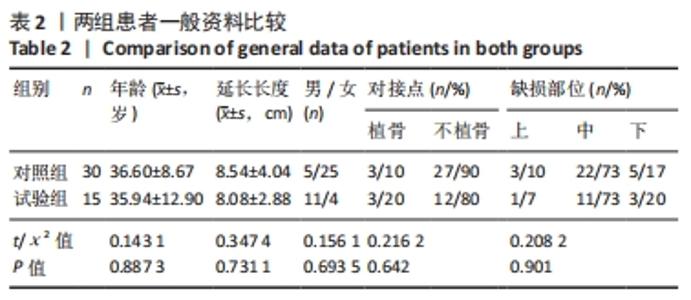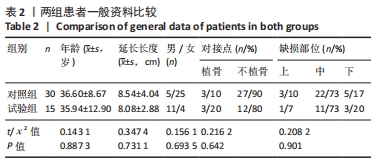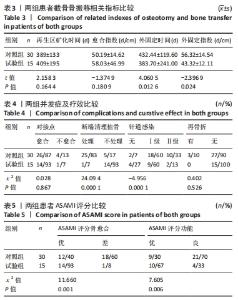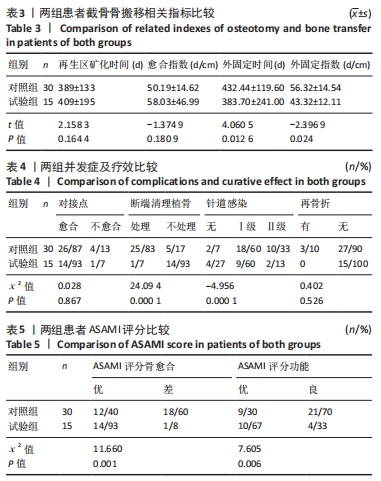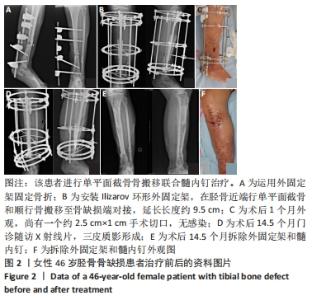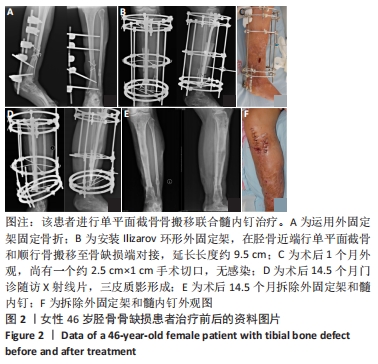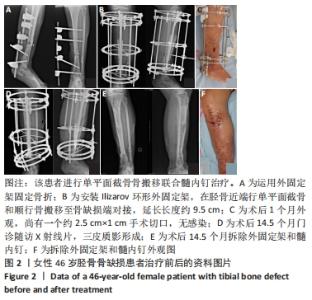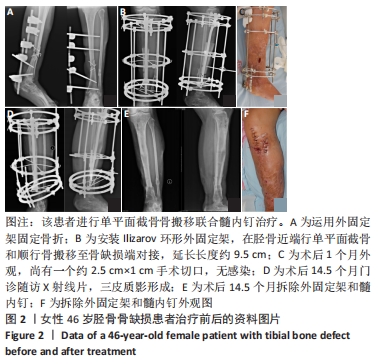[1] 王斌,贾松,卢爱东,等.环式外固定器结合髓内钉行骨段滑移术治疗胫骨非感染性骨缺损[J].中国修复重建外科杂志,2015,29(11):1348-1352.
[2] 夏和桃,彭爱民,罗先正,等.带锁髓内钉与骨延长器联合应用在小腿延长中的作用[J].中华外科杂志,2005,43(8):495-498.
[3] 黄雷,朱峰,王慎东,等.外固定架结合髓内钉延长术治疗股骨缺损和不等长[J].中华创伤骨科杂志,2006,8(7):634-638.
[4] PALEY D, CATAGNI MA, ARGNANI F, et al. Ilizarov treatment of tibial nonunions with bone loss. Clin Orthop Relat Res. 1989;(241):146-165.
[5] PALEY D. Problems, obstacles, and complications of limb lengthening by the Ilizarov technique. Clin Orthop Relat Res. 1990;(250):81-104.
[6] PALEY D, MAAR DC. Ilizarov bone transport treatment for tibial defects. J Orthop Trauma. 2000;14(2):76-85.
[7] EL-ALFY B, EL-MOWAFI H, EL-MOGHAZY N. Distraction osteogenesis in management of composite bone and soft tissue defects. Int Orthop. 2010; 34(1):115-118.
[8] SALA F, THABET AM, CASTELLI F, et al. Bone transport for postinfectious segmental tibial bone defects with a combined ilizarov/taylor spatial frame technique. J Orthop Trauma. 2011;25(3):162-168.
[9] FüRMETZ J, SOO C, BEHRENDT W, et al. Bone Transport for Limb Reconstruction Following Severe Tibial Fractures. Orthop Rev (Pavia). 2016;8(1):6384.
[10] 徐文鹏.带锁髓内钉结合外固定器系统进行小腿延长的临床研究[D].天津:南开大学,2012.
[11] AKTUGLU K, EROL K, VAHABI A. Ilizarov bone transport and treatment of critical-sized tibial bone defects: a narrative review. J Orthop Traumatol. 2019;20(1):22.
[12] ILIZAROV GA. Clinical application of the tension-stress effect for limb lengthening. Clin Orthop Relat Res. 1990;(250):8-26.
[13] CLATWORTHY MG, CLARK DI, GRAY DH, et al. Reamed versus unreamed femoral nails. A randomised, prospective trial. J Bone Joint Surg Br. 1998; 80(3):485-489.
[14] PALEY D, HERZENBERG JE, PAREMAIN G, et al. Femoral lengthening over an intramedullary nail. A matched-case comparison with Ilizarov femoral lengthening. J Bone Joint Surg Am. 1997;79(10):1464-1480.
[15] RHINELANDER FW. Tibial blood supply in relation to fracture healing. Clin Orthop Relat Res. 1974;(105):34-81.
[16] 黄正,冯伟,傅文彧,等.扩髓治疗骨折不愈合中的血管分布研究[J].中华创伤骨科杂志,2008,10(5):440-445.
[17] 王斌,王鹏飞,王宇鹏,等.胫骨截骨延长的血管解剖学研究[J].中国修复重建外科杂志,2015,29(7):835-839.
[18] 王斌,张姚,刘晓玲,等.胫骨近端截骨滑移对胫骨近端肌肉起点的影响[J].中国骨与关节损伤杂志,2015,30(10):1065-1067.
[19] THAKEB MF, MAHRAN MA, EL-MOTASSEM EL-HM. Bone transport for the management of severely comminuted fractures without bone loss. Strategies Trauma Limb Reconstr. 2016;11(1):19-24.
[20] TETSWORTH K, PALEY D, SEN C, et al. Bone transport versus acute shortening for the management of infected tibial non-unions with bone defects. Injury. 2017;48(10):2276-2284.
[21] MORA R, MACCABRUNI A, BERTANI B, et al. Revision of 120 tibial infected non-unions with bone and soft tissue loss treated with epidermato-fascial osteoplasty according to Umiarov. Injury. 2014;45(2):383-387.
[22] BUMBASIREVIĆ MZ, ANDJELKOVIĆ S, LESIĆ AR, et al. Operative treatment of flexor pollicis longus tendon with Krackow suture, functional results--preliminary results. Acta Chir Iugosl. 2010;57(4):15-17.
[23] GUERRESCHI F, AZZAM W, CAMAGNI M, et al. Tetrafocal bone transport of the tibia with circular external fixation: a case report. J Bone Joint Surg Am. 2010;92(1):190-195.
[24] GUAN J, RUAN H, YIN J, et al. Bifocal osteosynthesis to treat radial shortening deformity with dislocation of the inferior radioulnar joint. BMC Musculoskelet Disord. 2019;20(1):440.
[25] SIGMUND IK, FERGUSON J, GOVAERT GAM, et al. Comparison of Ilizarov Bifocal, Acute Shortening and Relengthening with Bone Transport in the Treatment of Infected, Segmental Defects of the Tibia. J Clin Med. 2020;9(2): 279.
|


